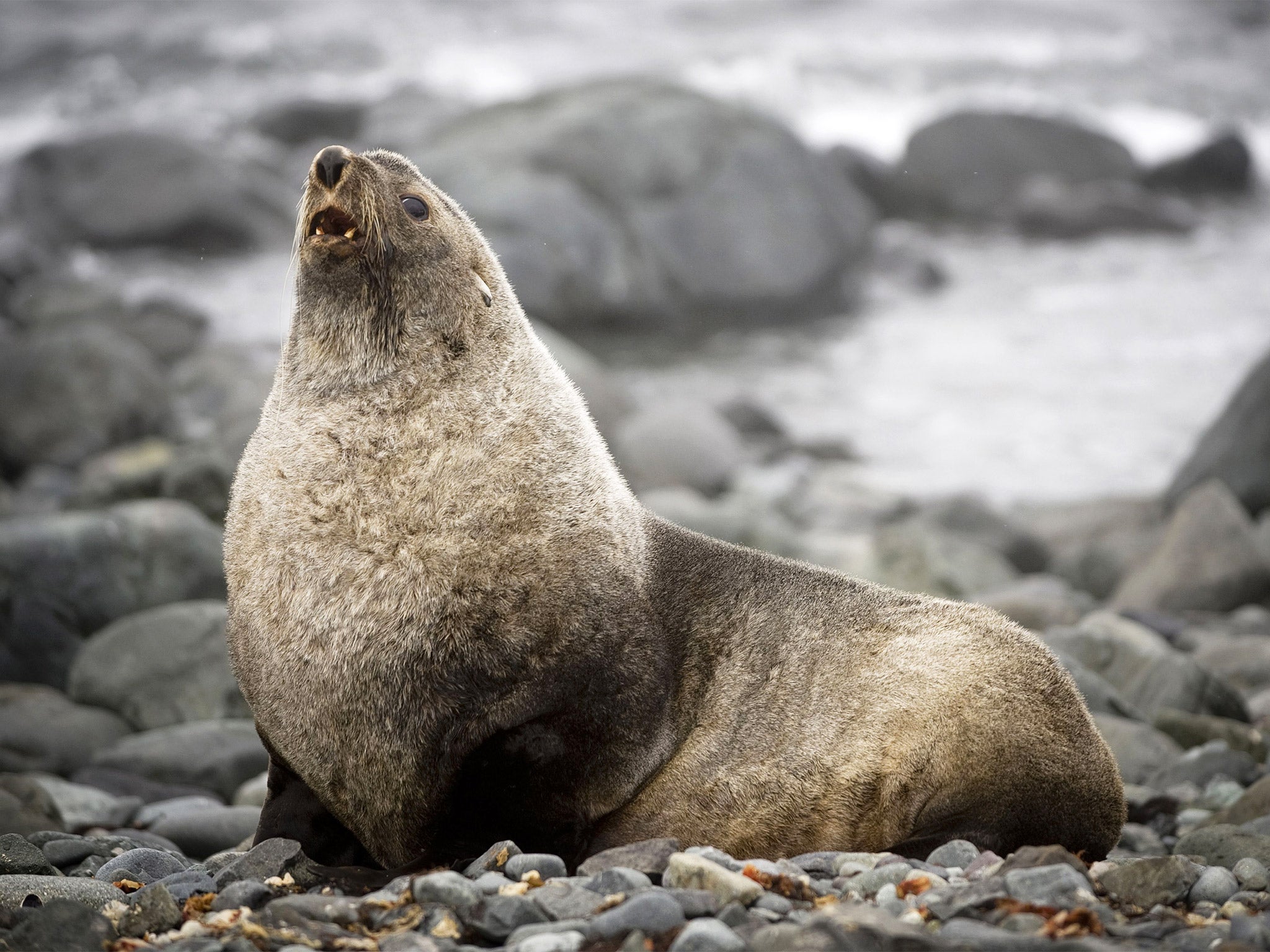Climate change threatens to make the antarctic fur seal extinct

Antarctic fur seals which were brought to the brink of extinction a century ago when they were ruthlessly hunted are now facing a new threat from food shortages caused by climate change, scientists have found.
The pressure on the population of fur seals in the South Atlantic is now so intense that it is even changing their genetic make-up according to a 20-year study that has discovered a link between the genetics of the fur seals and its main food source – Antarctic krill.
Scientists have found that female fur seals living on South Georgia Island with only a certain combination of genes are surviving long enough to breed and that these seals are breeding later in life and less frequently than seals in previous years with a different genetic constitution.
“Compared with 20 years ago, we can see that female fur seals are now born with a lower weight, those that survive and return to breed tend to be the bigger ones and they have their first pup later in life than they used to,” said Jaume Forcada of the British Antarctic Survey in Cambridge.
“Such changes are typically associated with food stress. An important food source for the seals is Antarctic krill. Decades of data collected at South Georgia show how changes to the seal population have occurred over time with changes in krill availability,” said Dr Forcada, lead author of the study published in the journal Nature.
Genetic testing has shown that female fur seals with a diverse combination of genes from both parents – known as heterozygosity – are surviving longer than females with a low level of genetic diversity, known as homozygosity.
Normally, heterozygosity is associated with evolutionary genetic fitness as individuals are better at surviving, but this is not longlasting as the trait results from the random recombination of genes and is not uniformly passed down the generations like other inherited traits, the scientists said.
Finding an increase in genetic heterozygosity might suggest that the seals are responding well to environmental pressures, but in fact the reverse is probably happening and is a worrying symptom of a population that is once again in decline, they said.
“We found that over the last two decades, the proportion of breeding females that are highly heterozygous has increased, as these individuals are more likely to survive the changing conditions,” said Joe Hoffman of Bielefeld University in Germany, the study’s coauthor.
“Strong selection by the environment can drive rapid evolution. However, in this case the seals do not appear to be evolving because surviving females do not pass their high heterozygosity on to their offspring,” Dr Hoffman said.
“With each new generation, the process of selection has to start all over again, with only those individuals that happen to be born more heterozygous having a good chance of survival. As the climate continues to change, many fur seal pups are not surviving to adulthood and the population is declining,” he said.
The availability of krill, a type of shrimp-like crustacean, is becoming more variable as a result of the changing climate in the region, such as warmer waters and melting ice. This is having a direct impact in the numbers of krill found within the fur seals’ hunting grounds, the scientists said.
“Our results provide compelling evidence that selection due to climate change is intensifying, with far-reaching consequences,” they concluded in their study.
Oxford zoologists Tim Coulson and Sonya Clegg warned in a commentary article that the findings suggest that it may be much harder to arrest the ongoing decline of the Antarctic fur seal in the 21st Century than it was in the last century.
Other species affected by climate change
As global temperatures increase in the coming decades, scientists expect the warming to have a significant impact on a wide variety of vulnerable species.
Alpine plants and amphibians such as frogs, toads and salamanders that live at high altitudes will be among the first to suffer. The golden toad of Costa Rica is believed to have gone extinct from its cloud forest habitat largely because of increasing temperatures.
Much of the impact on species is likely to result from a complex interaction of plants and animals, and changes to the timing of vital food sources, especially for the newly hatched chicks of vulnerable birds.
Studies have shown for instance that the food supply of the great tit, Parus major, now peaks earlier in the year but there has been no corresponding change to the time of the year that the tits lay their eggs, causing a mismatch between food supply and the timing of breeding.
One of the most visible effects of climate change in years to come will be the impact on coral reefs, which can be seen from space. Both increasing ocean temperatures and rising ocean acidity is likely to lead to a tipping point later this century when many reefs will begin to die off.
Subscribe to Independent Premium to bookmark this article
Want to bookmark your favourite articles and stories to read or reference later? Start your Independent Premium subscription today.

Join our commenting forum
Join thought-provoking conversations, follow other Independent readers and see their replies